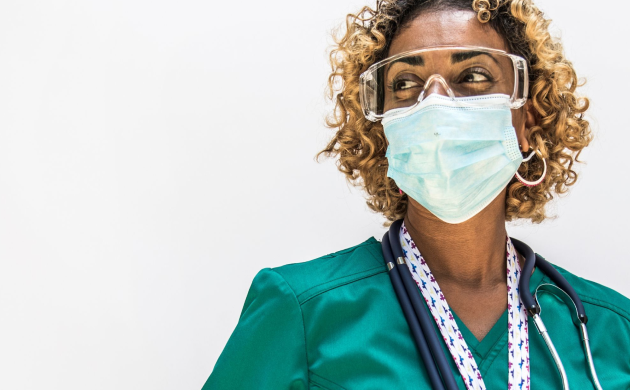
Fall allergies 101: from ragweed to relief in one simple guide.
September rolls around and suddenly you're sneezing nonstop. Your nose won't quit running and your eyes feel like sandpaper. Sound familiar
You're probably dealing with fall allergies, not that cold you thought was coming on.
About 50 million Americans have allergies and fall can trigger some of the most frustrating symptoms of the year. Fall allergies sneak up on people because everyone expects spring to be the problem season.
But once you figure out what's actually happening, you can fight back and enjoy those beautiful fall days instead of hiding indoors with a box of tissues.
Is it fall allergies or just a cold? Here's how to tell.
Telling allergies apart from a cold isn't always easy, but there are some dead giveaways that point you in the right direction.
Fall allergy symptoms.
Fall allergy symptoms include:
- Sneezing fits that go on forever
- Clear, runny nose that never seems to dry up
- Itchy, watery eyes that make you look like you've been crying.
Your throat and the roof of your mouth might feel itchy, too, like you need to scratch inside your mouth.
Cold symptoms.
Cold symptoms are different from fall allergies in key ways:
- Body aches and sometimes fever (allergies never cause these)
- Thick, yellow or green mucus instead of clear discharge
- Sore throat that feels raw and painful rather than itchy
How to tell the difference between fall allergies and a cold.
Here's the biggest clue: Colds last 7-10 days and gradually get better.
Fall allergies can stick around for weeks until whatever's triggering them goes away. They also tend to hit you suddenly when you walk outside, while colds creep up slowly over a couple of days.
Timing matters too. Your fall allergies might get worse at the same time every morning or when the wind picks up. Colds don't follow those kinds of patterns.
What causes fall allergies and what are common triggers?
Fall allergies come from tiny particles floating around in the air during autumn, mostly from weeds and molds that love this time of year.
Ragweed.
Ragweed takes the prize for causing the most misery. One ragweed plant dumps pollen grains into the air each season and they can travel hundreds of miles on the wind.
Ragweed pollen usually reaches peak levels in mid-September; this type of pollen can cause seasonal allergic rhinitis (more commonly known as hay fever), which affects as many as 25 million people in the U.S.
Other fall allergy triggers.
Other fall allergy troublemakers include lamb's quarters and pigweed, which grow throughout New York, New Jersey and surrounding areas.
These weeds produce tons of pollen that love to make allergy-sensitive people miserable. While sagebrush is mainly a problem out west, people in the NYC metro area deal with plenty of other nasty weeds that can trigger symptoms just as badly.
Outdoor mold.
Outdoor mold becomes a huge problem when leaves start falling and staying wet. Every time you rake or walk through leaf piles, you're stirring up millions of mold spores.
The two biggest culprits are called Alternaria and Cladosporium. They thrive on all that damp, decaying plant matter.
Indoor fall allergens.
Indoor problems get worse, too.
When you fire up your heating system after months of it sitting idle, all that dust gets blown around your house. Dust mites multiply and pet dander becomes more bothersome when you're spending more time indoors.
Fall allergy treatment: when over-the-counter isn't enough.
Most people start with drugstore remedies, but sometimes you need something stronger to get real relief from fall allergies.
OTC options for fall allergies.
Over-the-counter options that actually work for fall allergies include antihistamines like Claritin, Zyrtec and Allegra for sneezing and a runny nose.
Nasal steroid sprays like Flonase work great for stuffiness, but you need to use them regularly, not just when you feel awful. Follow package directions and don't use them longer than recommended without talking to a doctor.
Try saline rinses with a neti pot or squeeze bottle. They wash the pollen right out of your nose. For itchy eyes, antihistamine eye drops can be a lifesaver.
Prescriptions for fall allergies.
If drugstore treatments aren't cutting it after a few weeks, stronger antihistamines or combination nasal sprays might do the trick.
For people with severe symptoms every year, allergy shots can provide long-term relief by gradually building up your tolerance.
Check pollen counts before heading outside and stay in during peak times (usually mid-morning and early evening). Keep windows closed and use air conditioning instead. Shower and change clothes after being outside to get rid of pollen in your hair and on your skin.
Managing fall allergies is just one part of staying healthy during seasonal changes. Find more expert health guidance in our wellness blog.
Treat fall allergies with CityMD.
At CityMD, we can quickly figure out what's causing your fall allergy symptoms and get you the right treatment.
Don't let allergies ruin your favorite season. Visit any CityMD location for expert care when you need it most.

We’re ready to care for you.
Visit any CityMD urgent care location in your community today for an evaluation with one of our expert providers.